This post will guide you how to convert column list into a comma separated list in one cell in Excel. How do I convert a column into a comma separated list with a formula in Excel. Or how to convert a column into comma delimited list in Excel.
Table of Contents
1. Convert Column to Comma Separated List in Excel
Assuming that you have a list of data in range B1:B6, and you want to convert all values in column B to comma separated list in another cell. How to achieve it.
You can create a formula based on the TEXTJOIN function to achieve the result. Just like this:
=TEXTJOIN(“,”,TRUE,B1:B6)Type this formula into a blank cell and press Enter key in your keyboard.
2. Convert Column to Comma Separated List Using VBA Code
You can also use an Excel VBA macro to quickly convert column to a comma separated list in Excel. Just do the following steps:
#1 open your excel workbook and then click on “Visual Basic” command under DEVELOPER Tab, or just press “ALT+F11” shortcut.

#2 then the “Visual Basic Editor” window will appear.
#3 click “Insert” ->”Module” to create a new module.

#4 paste the below VBA code into the code window. Then clicking “Save” button.
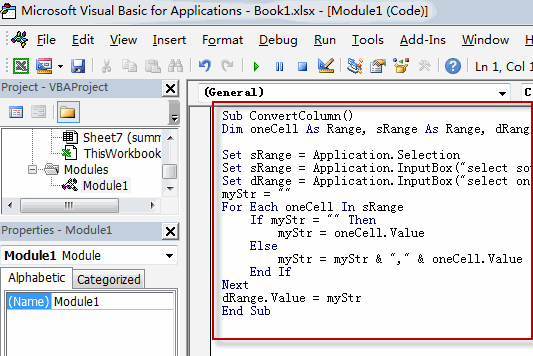
Sub ConvertColumn()
Dim oneCell As Range, sRange As Range, dRange As Range
myStr = ""
Set sRange = Application.Selection
Set sRange = Application.InputBox("select source Range:", "ConvertColumn", sRange.Address, Type:=8)
Set dRange = Application.InputBox("select one single cell as destination cell:", "ConvertColumn", Type:=8)
For Each oneCell In sRange
If myStr = "" Then
myStr = oneCell.Value
Else
myStr = myStr & "," & oneCell.Value
End If
Next
dRange.Value = myStr
End Sub#5 back to the current worksheet, then run the above excel macro. Click Run button.
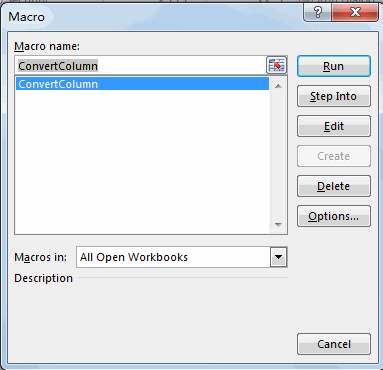
#6 select the source range, such as: B1:B6.
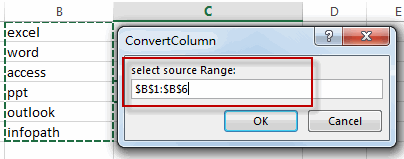
#7 select one blank cell to place the list that is separated by comma. click Ok button.
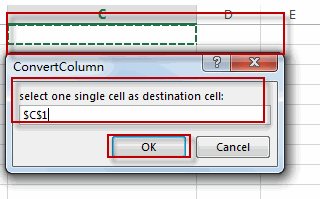
#8 lets see the result.
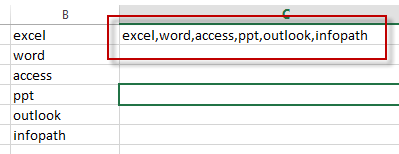
3. Video: Convert Column to Comma Separated List
This Excel video tutorial, where we’ll explore two methods to convert a column to a comma-separated list. We’ll start by using a formula based on the TEXTJOIN function, followed by a VBA code approach.
Leave a Reply
You must be logged in to post a comment.